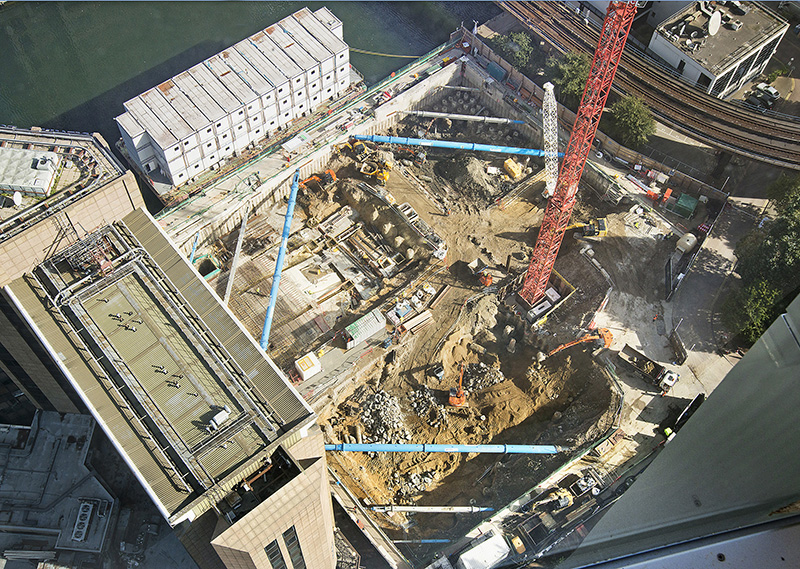
The role of monitoring can be fundamental to the success of groundworks projects. Taking advantage of all available data can help to ensure that the design is optimised and truly reflective of the real on-site conditions. Dave Holland, monitoring and technical director at Mabey Hire, explores further.
LARGE excavations can be required on a wide range of projects, with their successful and safe delivery being critical. While attention is frequently paid to the dangers of working from height, it’s also just as dangerous working below ground. With an immense amount of earth to retain, groundworks schemes can be unpredictable and complex.
Engineering temporary support schemes and ensuring that they meet the required load and force requirements can be challenging, often using conservative assumptions. To ensure the temporary works design is optimised and as efficient as possible, it can be advantageous that engineers have access to up-to-date information and data about the ground conditions on site, using this insight to feed into the design process.
Lots of factors can have an impact on the overall ground behaviour, all of which can lead to different load cases at different times and phases of a project.
As well as carrying out Ground Investigation work, teams can also use intelligent equipment to monitor movement, groundwater levels, surcharges and temperature ranges – all environmental factors that could potentially affect the design scope or parameters of the temporary works scheme. This can also be cross-referenced with existing geotechnical engineering research and data from previous related projects, all of which can help inform and shape the temporary works design. By carrying out such investigative works on site, engineers can make more informed predictions about how the ground will behave, helping site teams to safely excavate and retain the ground.
Monitoring has a vital role to play throughout the construction phase plan, both during the installation of the temporary support equipment and the excavation works themselves. By having live insight into the actions and behaviour of the ground, as well as the loads passing through the support equipment, engineers can ensure that the steel props and struts continue to meet and cope with the expected forces. In the event that any anomaly is highlighted or there are any unexpected stresses, the team can then use this data visibility to immediately make any required changes to the design and guarantee the continued safe delivery of the works.
A great example of this reactive and flexible nature of geotechnical engineering was during the installation of three attenuation tanks on the newly expanded Port of Tilbury, Essex. Here, three 70-metre long, 10-metre wide and 7-metre deep excavations were required and Mabey Hire was appointed to design and supply the groundworks equipment for the project.

The original groundworks scheme featured two levels of Supershaft Plus (the four-way hydraulic bracing system) and Super Bracing Struts, to ensure the sheet piled walls of the excavation remained stable. However, after it was discovered that ground conditions were better than what had originally been indicated, Mabey Hire’s engineering team was able to re-evaluate the scheme design and amend it in line with the real-time conditions experienced on site.
As a result, the kit was able to be limited to just one level of bracing and struts, significantly reducing the amount of steel required. Mabey Hire’s innovative wireless prop-load monitoring solution was also fitted on the steel struts, providing the customer with peace of mind that the revised scheme would provide the necessary support.
While safety is, and will always be, the number one priority when approaching temporary groundworks support projects, making the design more efficient should also be a priority for engineers, with an optimised temporary works design not only helping to save costs but also cutting carbon emissions. By removing the unknowns and uncertainties, through the use of ground investigations and monitoring and geotechnical engineering, the more informed and successful the end-result can be.











